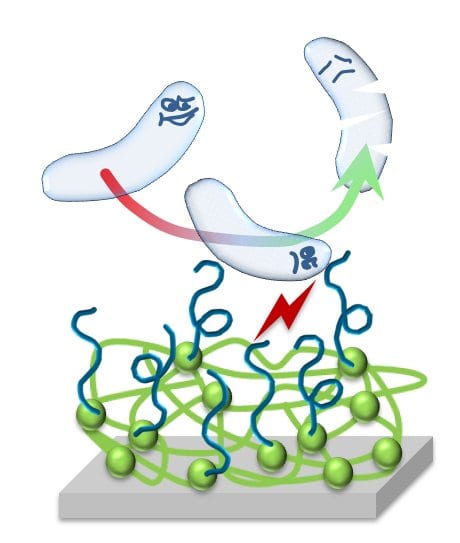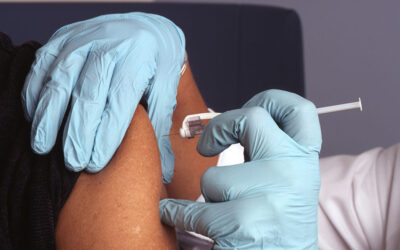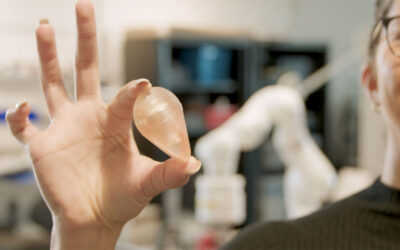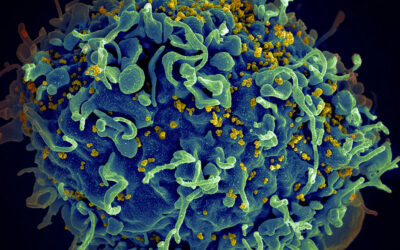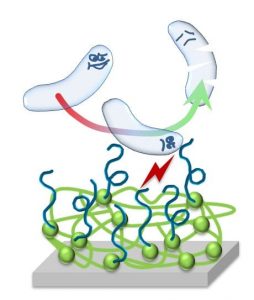 Contamination of surfaces with bacteria is a widespread problem in industry and medicine. In industry, bacteria participate in biofilm formation in diverse applications and environments, for example water purification membranes, desalination units, water and oil pipelines, and ship hulls. In medicine, adhesion of only a few bacteria to a medical device can lead to severe infections.
Contamination of surfaces with bacteria is a widespread problem in industry and medicine. In industry, bacteria participate in biofilm formation in diverse applications and environments, for example water purification membranes, desalination units, water and oil pipelines, and ship hulls. In medicine, adhesion of only a few bacteria to a medical device can lead to severe infections.
For example, urinary catheters can become infected by bacteria that come from the patient’s skin during the catheter insertion process, or by bacteria that migrate along the catheter during use. A single bacterial cell on a catheter can form a biofilm in less than 24 hours.1 Thus, patients with a urinary catheter have a severe risk of catching bacterial infections, and if the bacteria involved are multi-resistant, this may even be life-threatening.
In their paper Just Antimicrobial Is Not Enough – Towards Bifunctional Polymer Surfaces With Dual Antimicrobial and Protein-repellent Functionality, Lienkamp and coworkers propose new materials that are designed to fight biofilm formation on medical devices. They demonstrated the integration of antimicrobial and antifouling properties through an ingenious surface modification strategy.
There are already some examples of catheters equipped with antimicrobial silver coatings used in the medical field, for example the CHSS catheter. As Lienkamp points out, however, antimicrobial activity of medical devices is not enough. When bacteria are killed by an antimicrobial or antibiotic component, their debris will stick on the material surface, which is an open invitation to further bacteria to colonize the surface on top of the debris.
Thus, Lienkamp and her group have been developing combined materials made from antimicrobial and protein resistant components to obtain materials with dual activity. They propose that the dual activity of their coating could not only reduce bacterial growth on the surface, but also prevent protein adhesion and thus debris deposition on the surface. Early data published showed that, depending on the method of preparation and composition of the coatings, dual activity was possible on the lab scale.2 Further tests, including in-vivo performance of the materials, are however pending.
References
- Hetrick, E. M.; Schoenfisch, M. H., Reducing implant-related infections: Active release strategies. Chemical Society Reviews 2006, 35 (Copyright (C) 2012 American Chemical Society (ACS). All Rights Reserved.), 780-789.
- (a) Zou, P.; Hartleb, W.; Lienkamp, K., It takes walls and knights to defend a castle – synthesis of surface coatings from antimicrobial and antibiofouling polymers. J. Mater. Chem. 2012, 22 (37), 19579-19589; (b) Hartleb, W.; Saar, J. S.; Zou, P.; Lienkamp, K., Just Antimicrobial Is Not Enough – Towards Bifunctional Polymer Surfaces With Dual Antimicrobial and Protein-repellent Functionality. Macromolecular Chemistry and Physics 2015, 10.1002/macp.201500266.

